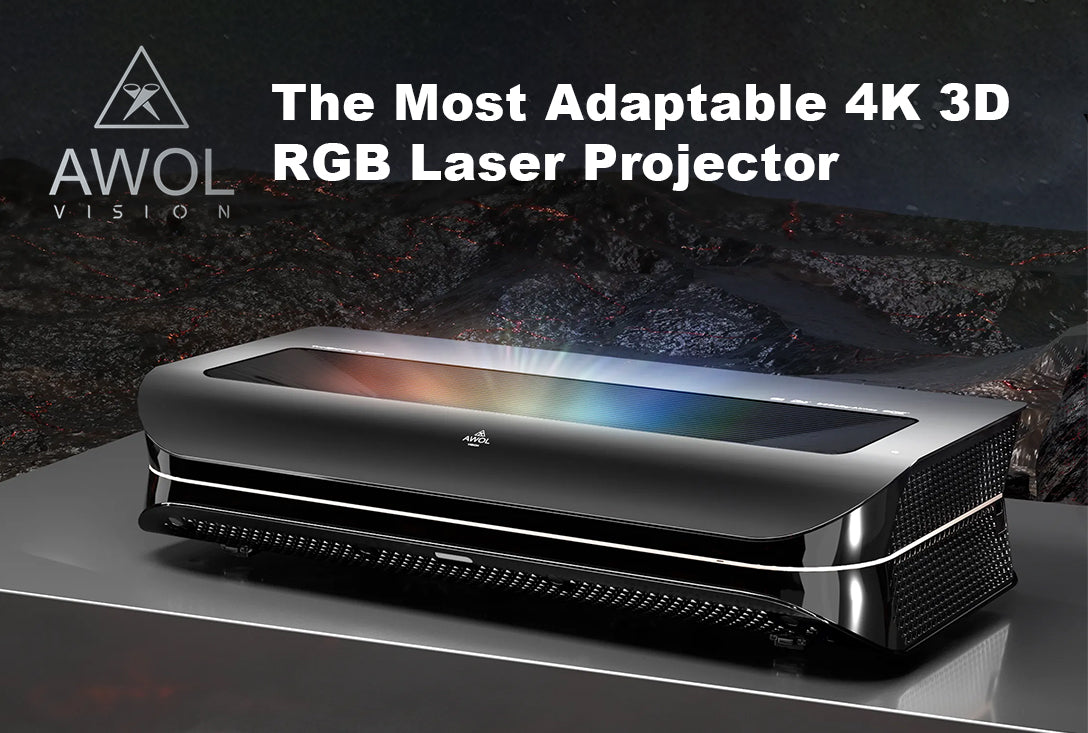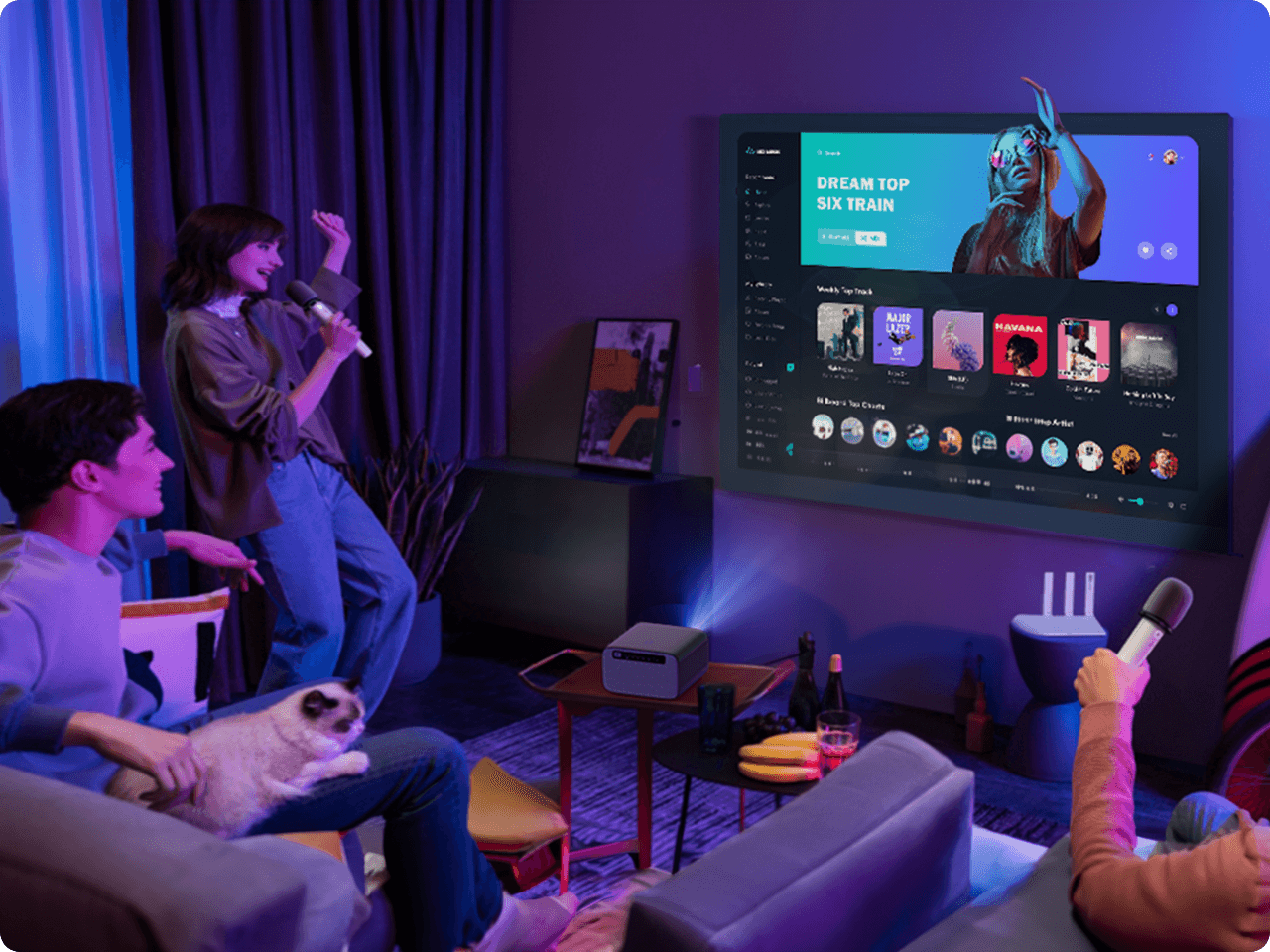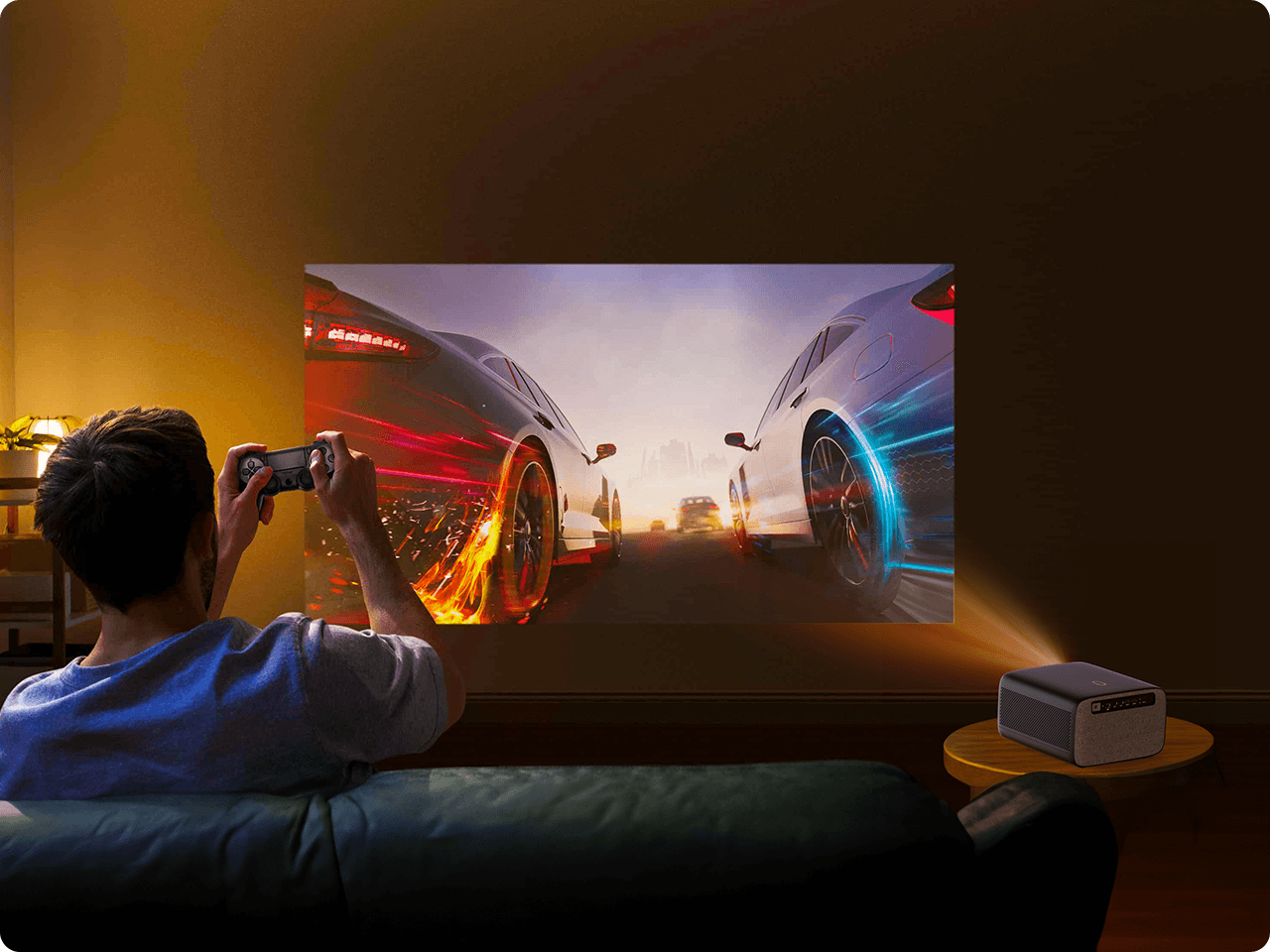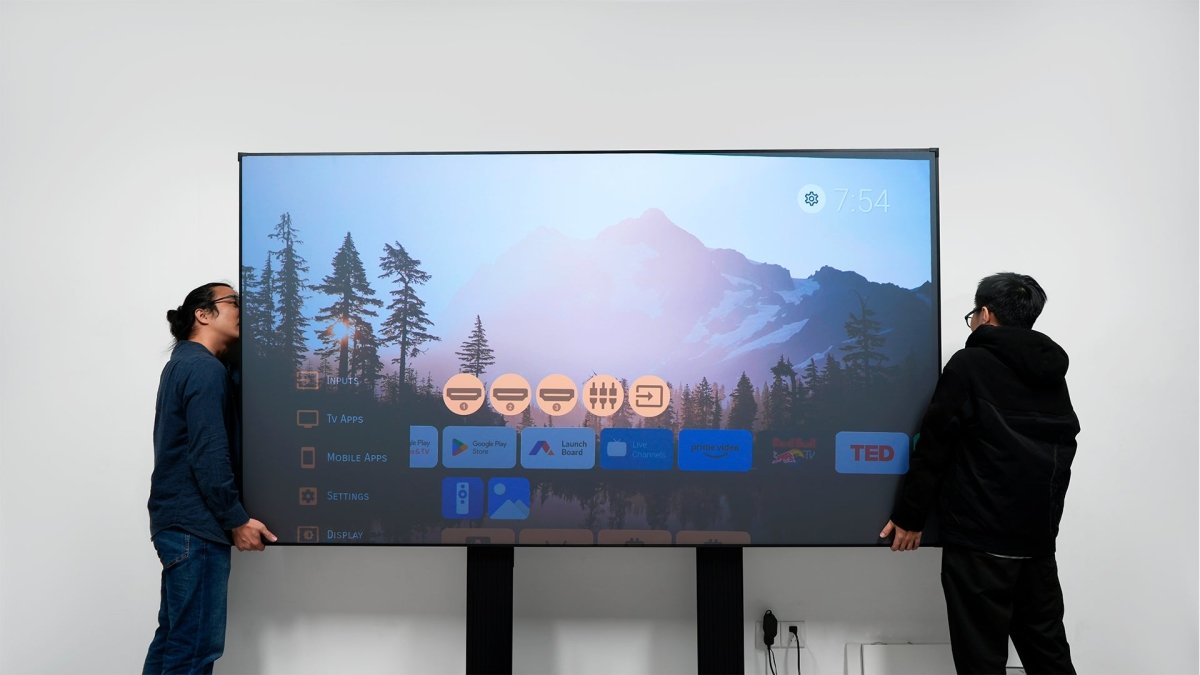| Lenticular screen | Fresnel screen | |
| Material Structure | Material Structure | semi-circular shape |
| Viewing Angle | 170 degrees | 100 degrees. |
| Resistant to ambient light | Resistant to ambient light from above | Resistant to ambient light from above, left and right |
| ambient light rejection capability | high | ultra-high |
| Gain | Low(usually less than 1) | High (usually higher than 1) |
| Screen type | fixed frame, drop down, floor rising. | fixed frame |
Lenticular screen or Fresnel screen?
Quick summary:
If your ultra-short-throw projector has a relatively low brightness (less than 2200 lumens), and you want to increase the brightness of the picture. You may want to consider the Fresnel screen.
Whether it's day or night, you want to have a screen with the best visual effect, you can choose the Fresnel screen.
But please remember to control the viewing within the 100 degree viewing angle.

If you usually watch movies and play games with a large group of friends, we recommend the Lenticular screen.
If your projector is inherently bright (above 2400lumens) and you think the brightness is sufficient (you can feel the effect by throwing the projector against a white wall first), you can choose a lenticular screen. Lenticular screens are more suitable for everyday use.
The lenticular screen can be matched with any brightness of ultra-short-throw projector toward.
Lenticular screen structure
This type of screen has a sawtooth-like structure that the screen surface coated with black layer and white slopes serving as reflective layers at the same time.
The black coating absorbs light from above to preventing light reflection and resulting in a clearer projected image.

Fresnel screen structure
This light-resistant property of Fresnel screens enhances their ability to render images with superior clarity and brightness. In contrast, lenticular screens lack the ability to block light from the sides, making them slightly less resistant to ambient light.
Fresnel's gain also be higher than lenticular screens.

Viewing Angle
What is a viewing angle?
Put simply, it's the angle at which a viewer can see all content displayed on the screen clearly.
For traditional televisions, viewing angle is typically 180 degrees.
Lenticular screens offer a viewing angle of 160 to 170 degrees. However, while mostly suppliers announced that Fresnel screens have a viewing angle of 90 to 100 degrees, But if you have particularly requirement about image quality, the practical viewing angle limitation for Fresnel screens is around 60 degrees.
As shown in below videos, we'll compare the difference of Lenticular and Fresnel screens at 0 degrees, 45 degrees, and nearly 90 degrees.
Please be aware that the overexposure of the Fresnel screen at 0 degrees is not accurate because of the camera parameters. In real-life viewing by your eyes, it will not be like that.
This means that if you stand in the center area of the Fresnel screen, you'll got excellent visual experience totally.
However, when you stand on either side of the screen, at angles of 30 degrees or 60 degrees from the center, you'll notice that as your angle increases, the brightness of the picture gradually is slowly decreases.
The lenticular screen, on the other hand, doesn't have this limitation. It has a viewing angle of 170 degrees, meaning that if you're planning to invite your friends over to your living room to watch the game, you'll both be able to enjoy the same vibrant picture under high-quality .
If hosting parties isn't the normalcy situation and you prefer cozy movie nights with just a couple of friends that all seated within a 45-degree angle of the screen's centerline, then choose Fresnel screen might be the ideal choice for you.
Screen Type
Lenticular screens are made of flexible material, allowing them to be rolled or curved, whereas Fresnel screens are rigid and cannot be bent.
This flexibility enables lenticular screens to be used in various configurations such as drop-down, floor rising, or fixed frame, while Fresnel screens are typically limited to fixed frame installations.
There are also risks you may need to take by choosing Fresnel
Hotspots:
What are hotspots?
A hotspot refers to the uneven brightness across the screen, where the center appears brighter than the edges.
To illustrate, imagine shining a flashlight against a wall. You'll notice a brighter center with gradually diminishing brightness towards the edges, resembling what we refer to as a hotspot.
This phenomenon may result in whites and colors appearing significantly brighter in the center of the screen compared to the top and sides.
Ceilings reflect light:
If your home own low ceilings, choosing a Fresnel screen may also run the risk of reflected light from the ceiling.
How to avoid the aforementioned issues:
Usually the above problem occurs because of the less favorable raw materials of Fresnel.
We highly recommend opting for a premium Fresnel screen.
Our Nothing Projector Fresnel screens are crafted from top-tier fabrics in the industry, effectively mitigating the aforementioned issues.



















